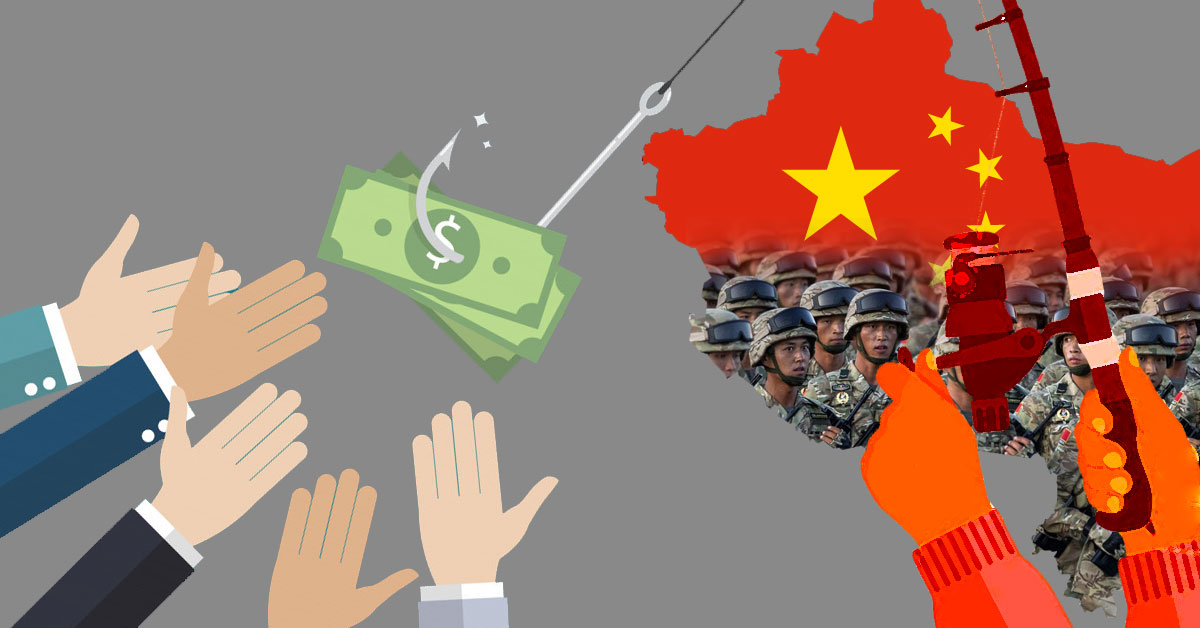How Is India Countering Chinese String of Pearls?

Indian PM Narendra Modi signed the India-Singapore Bilateral Agreement for Navy Cooperation in 2018 which allows Indian Navy ships logistical support, including refuelling at Singapore’s Changi naval base located near the disputed South China Sea.
Changi Naval Base forms a strategic point in the ‘Necklace of Diamonds’ that India is creating to counter China’s ‘String of Pearls’ strategy.
The ‘Necklace of Diamonds’ comprises Changi Naval Base in Singapore, Chabahar Port in Iran, the Assumption Islands in Seychelles, and Duqm Port in Oman. In addition to this, India is creating strong naval ties with Vietnam, Japan, France, Australia and the United States.
As reported earlier, the Strait of Malacca is considered as one of the most important shipping lanes in the world. It is the primary shipping lane between the Indian and the Pacific Ocean which links major powers including China, Japan, India, South Korea, Malaysia.
Close to 100,00 vessels pass through it every year making it the busiest strait in the world. Through the Changi Naval Base agreement, India and Singapore will be able to engage more through the Strait of Malacca from where China’s 80% of the oil imports pass, thereby making India’s presence in the region a point of concern for China.
However, China’s investment in its ‘String of Pearls’ is greater than India in its ‘Necklace of Diamonds’. China has invested US$60 billion in Africa under its String of Pearls strategy, whereas India’s largest investment for its Necklace of Diamonds amounts to $8 billion, in Chabahar Port in Iran.
Even that has landed badly for India as Tehran has decided to proceed with a vital railway project by itself citing delays from New Delhi. As earlier reported, New Delhi and Tehran were to construct the Chabahar-Zahedan railway line as “part of transit and transportation corridor in a trilateral agreement between India, Iran and Afghanistan”.
Despite several site visits by Indian engineers, Delhi never commenced the work, apparently due to apprehensions that these could attract U.S. sanctions. However, the U.S. had provided a sanctions waiver for the Chabahar port and the rail line to Zahedan, but it has been difficult to find equipment suppliers and partners due to concerns they could be targeted by the U.S.
China’s Debt Trap Strategy

Another weapon that China has in its arsenal is the use of the debt trap strategy. China is able to gain influence across the world and grab considerable power in India’s backyard by dispensing billions of dollars in the form of concessional loans to developing countries and then asking for geopolitical support in exchange for debt relief.
The latest example is the Island nation neighbouring India. Sri Lanka had relied heavily on China to construct $1.5 billion port in Hambantota in the country’s south. After the port was operating at a loss and couldn’t generate enough revenue to repay the loan to Beijing.
This allowed China to control over a key port positioned at the doorstep of its regional rival India and a strategic foothold along a key commercial and military waterway. Hence, due to the financial muscle, China’s allies are likely to favour of Beijing instead of New Delhi.
Support From Other Countries
Amid the ongoing Covid-19 pandemic, economies of all the nations have become vulnerable. India’s allies have not been able to free themselves from economic interdependence with China and hence, may not be able to give effective support to New Delhi.
India and China are supported by strong allies but the pandemic has made it challenging for any country to get into a cold war with China which supplies essential pharmaceutical products to nations worldwide.
Another factor that has stopped any country to get in trouble with China is the strong military that it possesses. In 2020, China had the largest active-duty military force in the world, with about 2.18 million active military personnel. India, the United States, North Korea, and Russia rounded out the top five countries with the largest active-duty military forces, according to stastics.
Even the Five Eyes seem hesitant to take action against China on the India-China border conflict fearing that it would be considered as an intrusion in the bilateral relations between India and China.
The Five Eyes comprise New Zealand, Australia, the US, Canada and the UK. US’s State Secretary, Mike Pompeo went as far as saying that the US supports India’s ban on certain mobile apps that can serve as appendages of the CCP’s surveillance state but it still cannot be assessed as to how far this support will go.
UK and Australia have not shown any direct support for neither India. UK PM Boris Johnson described the situation as “very serious and worrying” and advised both countries to solve the issue “between them,” thereby depicting the unwillingness of the UK to take a stand.
Australian Prime Minister Scott Morrison who is at loggerheads with China has also taken a neutral stand on the issue. There has been no official statement from New Zealand on the issue either.
Looking at the current situation, especially with the ongoing pandemic, it is safe to conclude that India’s ‘Counter String of Pearls’ strategy to challenge China’s influential networks needs massive financial investments and it is better for the US to tame the Dragon, for now.

Comments
Post a Comment